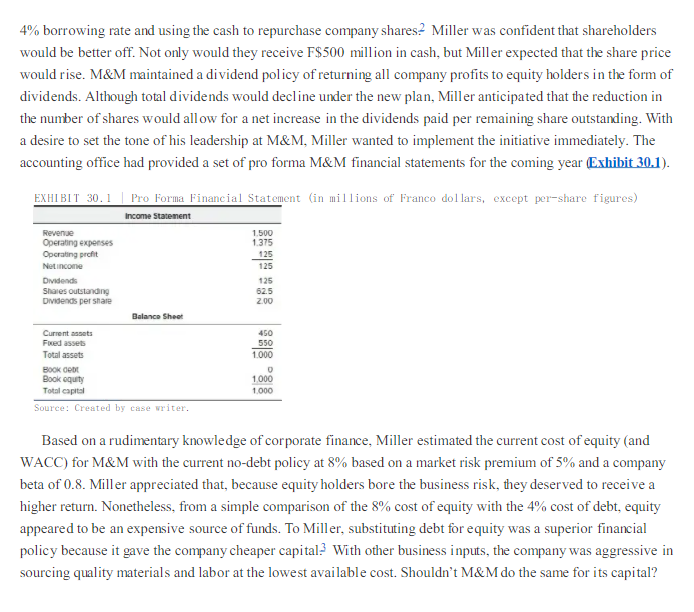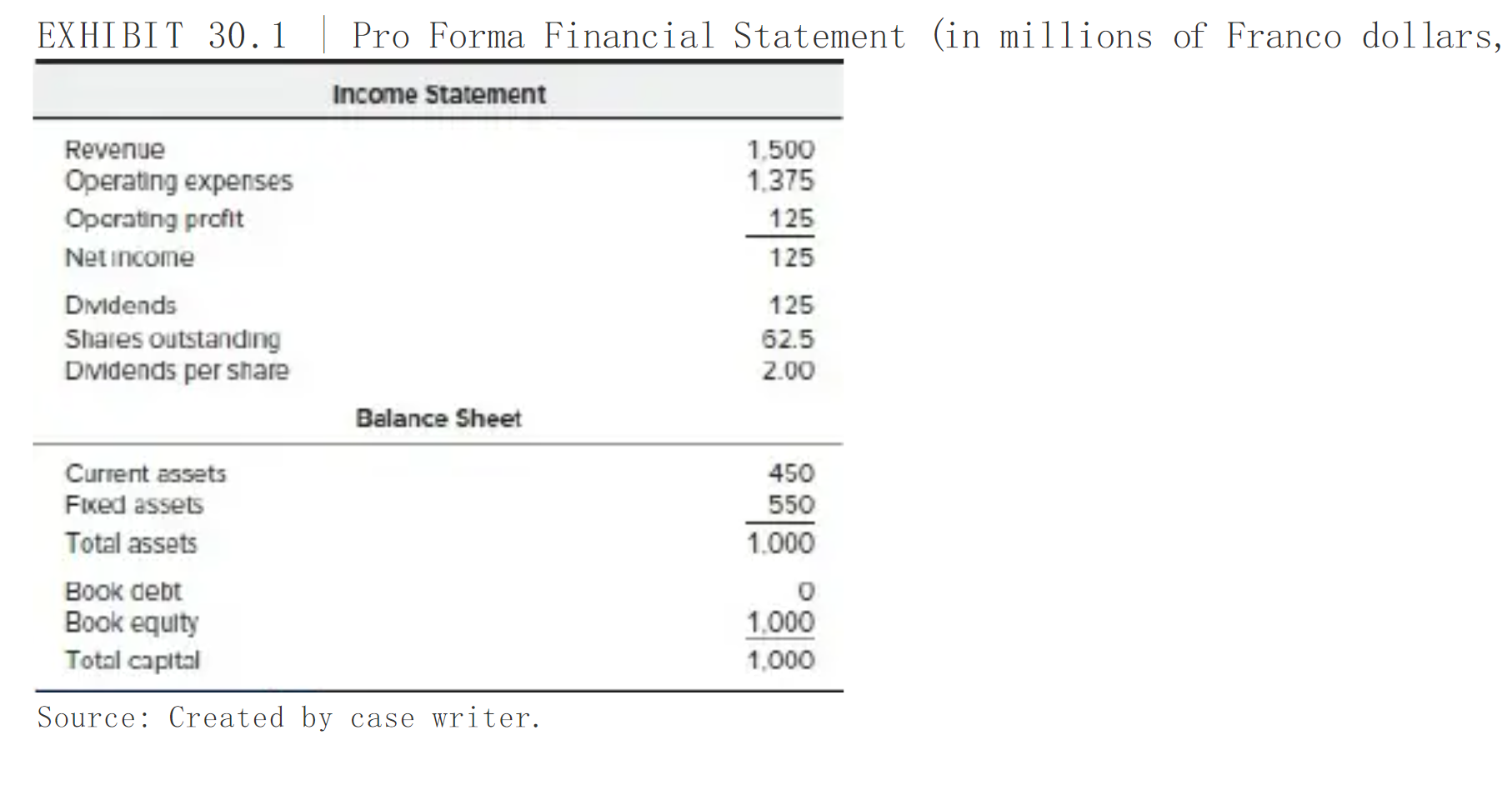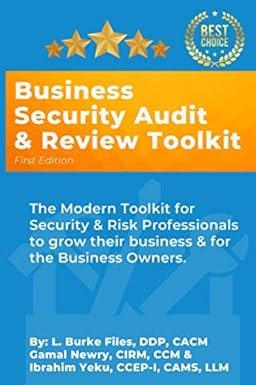Question
please please type the answer instead of posting an image What impact does the repurchase plan have on M&Ms weighted-average cost of capital? Complete the
please please type the answer instead of posting an image
What impact does the repurchase plan have on M&Ms weighted-average cost of capital? Complete the table below (No Corporate Taxes). What are the debt and equity claims worth under the alternative scenarios? You may note that the present value of a perpetual cash flow stream is equal to the expected payment divided by the associated required return. Which proposal is best for investors, discuss your results in your explanation? What do you recommend that Miller do?
| Income Statement | Debt = 0 | Debt = 500 | |||||
| Revenue | 1500 | 1500 | |||||
| Operating expenses | 1375 | 1375 | |||||
| Operating profit | 125 | 125 | |||||
| Interest payments | 0 | ||||||
| Taxes | 0 | 0 | |||||
| Net profit | 125 | ||||||
| Dividends | 125 | ||||||
| Shares outstanding | 62.5 | ||||||
| Dividends per share | 2.00 | ||||||
| Cost of Capital | |||||||
| Cost of debt | 4.00% | 4.00% | |||||
| Beta | 0.800 | Levered Beta | |||||
| Cost of equity | CAPM | ||||||
| WACC | = D / V * Kd (1 - t) + (1 - D/V) * Ke | ||||||
| Cash flows | |||||||
| Debt holders | = Interest payments | ||||||
| Equity holders | = Dividend payments | ||||||
| Free cash flow | = Op profit | ||||||
| Value | |||||||
| Debt | = Int payments / Kd | ||||||
| Equity | = Div payments / Ke | ||||||
| Total | = Sum or FCF / WACC | ||||||
| Share price 1 | = Equity / Shares outstanding | ||||||
| Share price 2 | = DPS / Ke | ||||||
| Value of Firm | = Value of unlevered + Tax shield | ||||||
| D/E | = D / (V - D) | ||||||
| D/V | = D / V | ||||||



Step by Step Solution
There are 3 Steps involved in it
Step: 1

Get Instant Access to Expert-Tailored Solutions
See step-by-step solutions with expert insights and AI powered tools for academic success
Step: 2

Step: 3

Ace Your Homework with AI
Get the answers you need in no time with our AI-driven, step-by-step assistance
Get Started


